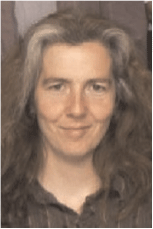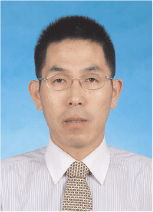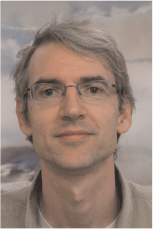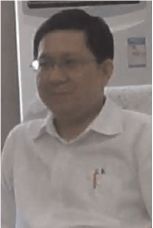3D microstructure characterisation of tight reservoir rocks and effective recoverable reserve estimation
Sam Yang A , Yudan Wang B , Sherry Mayo A , Andrew Tulloh A , Keyu Liu A C , Ben Clennell A , Marina Pervukhina A , Rukai Zhu C , Ruru Li D , John Taylor A , Sarah Irvine E and Anton Maksimenko FA CSIRO.
B Shanghai Synchrotron Radiation Facility.
C PetroChina.
D North University of China.
E Swiss Light Source.
F Australian Synchrotron.
The APPEA Journal 54(2) 539-539 https://doi.org/10.1071/AJ13112
Published: 2014
Abstract
A data-constrained modelling (DCM) approach has been developed at CSIRO, which enables 3D characterisation of pores and mineral phase distributions using quantitative multi-energy synchrotron CT. For a tight reservoir, such as a carbonate limestone or a shale rock, DCM can generate microscopic partial volume distributions of materials and pores which are the effects of the fine length scales below X-ray CT resolution. Using this information, a quantitative relation between recoverable reserve and pore-throat size can be established for a rock sample. The technique can also be used for characterisation of other unconventional reservoir rocks.

Dr Sam Yang (PhD in statistical physics) is a Senior Research Scientist and Research Team Leader at CSIRO Materials Science and Engineering Division, and Research Project Leader on Data-Constrained Modelling (DCM) in CSIRO Computational and Simulation Science Transformational Capability Platform. Dr Yang has developed the concept of data-constrained modelling (DCM) in 2007 and has been leading the DCM development in CSIRO. The DCM software has been used for quantitative microstructure characterisation in a diverse range of applications worldwide. Dr Yang has also researched on fundamental and applied statistical physics, applied complex system science, bio-physics, computational and simulations sciences. Dr Yang has published over 100 research papers in refereed journals, conference proceedings, book chapters and patents. Dr Yang is a Certified Materials Professional (CMP) member of Materials Australia and an Adjunct Professor in Shanxi University. Dr Yang has also been appointed honorary positions in a number of research organisations in Australia and China. |

Yudan Wang was born in 1985 in China. She has her PhD degree from the Shanghai Institute of Applied Physics, Chinese Academy of Sciences, major in Nuclear Technology and Applications in 2012. She is a research assistant of Shanghai Synchrotron Radiation Facility and presently works in the area of X-ray phase-contrast microscopy, microtomography and their applications for quantitative analysis of materials and shale rocks. |

Dr Sherry Mayo is a Senior Research Scientist in the X-ray and synchrotron science and instruments team within the Systems, Devices and Engineering program. Her expertise is in the area of X-ray micro-tomography, including advanced techniques such as phase-contrast and synchrotron methods. As well as providing high-resolution micro-CT services to a wide range of projects encompassing geomaterials and soft matter, she is also developing enhanced capabilities in 3D characterisation of materials for challenging applications, such as observing fluid flow and gas diffusion in geomaterials, and dynamic changes in soft matter. Recent work has been focussed on high-resolution microstructure characterisation in coke and multi-energy micro-CT in collaboration with Sam Yang’s Data Constrained Modelling project. |

Andrew Tulloh is the Senior Informatics Team Leader in CSIRO Materials Science and Engineering. He graduated from the University of Melbourne with a Bachelor of Electrical Engineering in 1978 and a Master of Engineering Science in 1982, afterwards he joined CSIRO in 1997. Andrew’s interests lie in machine vision, real-time systems and automation, materials modelling and software engineering. He has R and D experience in road infrastructure monitoring, airport security, the power generation industry, biomedical instrumentation, automotive software, factory automation and financial software. |

Dr Keyu Liu is a Principal Research Scientist at CSIRO Earth Sciences and Resource Engineering. His principal research areas are clastic sedimentology, fluorescence spectroscopy, hydrocarbon migration, and charge history of petroleum reservoirs and laboratory experiments on enhanced oil and gas recovery and CO2 geosequestration. Keyu has a BSc from China Ocean University, an MSc from the University of Sydney, and a PhD from the Australian National University. He is an adjunct research professor in the Research Institute of Petroleum Exploration and Development, PetroChina. Member: AAPG, SPE, AGU, IAS, FESAUS, and PESA. |

M. Ben Clennell leads the Petroleum Exploration and Production theme in CSIRO’s Energy Flagship. The theme covers onshore and offshore oil, gas research in both conventional and unconventional resources, and involves 70 full-time researchers at CSIRO research labs, located at major centres in Australia. Ben has a productive record in geological and geophysical research, and is an expert in petrophysics, natural gas hydrates in marine environments, hydrodynamics in porous media and more generally in marine and structural geology. He has led major research projects investigating both conventional and unconventional hydrocarbon reservoirs. Ben set up the petrophysics laboratories at the Australian Resource Research Centre and the X-ray CT scanning facilities, and is now helping the National Geosequestration Laboratory set up world class CO2 core flooding facilities. As well as having a range of international networks, Ben has works in close collaboration with partners from the Western Australian Energy Research Alliance (WA-ERA) at Curtin University and the University of Western Australia, where he also supervises a number of PhD students. Ben has a bachelor degree in geology from the University of Oxford and a PhD in structural geology from the Royal Holloway University of London. He has worked as a postdoctoral researcher at the universities of Birmingham, the UK and Leeds, with links to the Ocean Drilling Program. Before moving to Australia to work at CSIRO in 2003, Ben spent five years working as a visiting professor at the Federal University of Bahia in Brazil. |

Marina Pervukhina is the petrophysics team leader at CSIRO Earth Science and Resource Engineering Department. Marina is a physicist by background with a BSc and an MSc in applied physics and mathematics, received from the Moscow Institute of Physics and Technology in Russia, and a PhD in geophysics from Kyoto University in Japan. Marina’s main research interests are theoretical and numerical rock physics, borehole geophysics and petrophysics. Marina was designated as an outstanding reviewer for Geophysics in 2009. |

Rukai Zhu is a senior geologist for the Research Institute of Petroleum Exploration & Development (RIPED, PetroChina. He earned his BS (1988) in geology from Hunan University of Science and Technology, MS (1991) in geology from China University of Geosciences, and PhD (1994) in geology from Peking University. His research interests include sedimentology, reservoir and unconventional petroleum geology. |

Ruru Li is a PhD student in information processing and reconstruction at the North University of China, who is visiting at CSIRO Materials Science & Engineering Division for one year. Ruru Li has researched Computed Tomography (CT) reconstruction algorithms and has also researched fluid flow modelling using Lattice Boltzmann Model, and has developed a Partially Percolating Lattice Boltzmann Model (PP-LBM) to model fluid flow in porous media. Ruru Li has published over 10 research papers in refereed journals and conference proceedings. |

Dr Taylor is presently CSIRO eResearch Director and Leader, Computational and Simulation Sciences Transformational Platform, CSIRO Mathematical and Information Sciences. Dr Taylor has written more than 140 articles and books on computational and simulation science, climate change, global biogeochemical cycles, air quality and environmental policy, from local to global scale, spanning science, impacts and environmental policy. Articles have appeared in all the leading journals in the field, including Nature, Atmospheric Environment, Journal of Geophysical Research, Global Biogeochemical Cycles and Ecological Modelling. Dr Taylor is a founding Associate Editor of Environmental Modelling and Assessment. |

Sarah ‘Sally’ Irvine did her PhD in Physics at Monash university and was until recently a Post-Doctoral fellow at the Swiss Light Source. She has now returned to Monash as a Post-Doctoral fellow in the Engineering Department. |

Anton Maksimenko is a Scientist at Imaging & Medical Therapy Beamline Team - Imaging and medical beamline in Australian Synchrotron. He previously worked at the Photon Factory in Japan. |
References
Arns, C.H., Bauget, F., Ghous, A., Sakellariou, A., Senden, T.J., Sheppard, A.P., Sok, R.M., Pinczewski, W.V., Kelly, J.C., and Knackstedt, M.A. (2005). Digital core laboratory: Petrophysical analysis from 3D imaging of reservoir core fragments. Petrophysics 46, 260–77.Chen, F.F., and Yang, Y.S. (2012). Microstructure-based characterisation of permeability using a random walk model. Modelling and Simulation in Materials Science and Engineering 20, 04500.
Hughes, A.E., Mayo, S., Yang, Y.S., Markley, T., Smith, S.V., Sellaiyan, S., Uedono, A., Hardin, S.G., and Muster, T.H. (2012). Using X-ray Tomography, PALS and Raman Spectroscopy to Characterization Inhibitors in Epoxy Coatings. Progress In Organic Coatings 74, 726–33.
Li, R.R., Yang, S., Pan, J.X., Pereira, G., Chu, C., Taylor, J., Zou, C., and Lin, M., 2014—Lattice Boltzmann modeling of permeability in porous materials with partially percolating voxels. Physical Review E (unpublished).
Mayo, S.C., Tulloh, A.M., Trinchi, A., and Yang, S.Y.S. (2012). Data-Constrained Microstructure Characterization with Multispectrum X-Ray Micro-CT. Microscopy & Microanalysis 18, 524–30.
Trinchi, A., Yang, Y.S., Huang, J.Z., Falcaro, P., Buso, D., and Cao, L.Q. (2012). Study of 3D Composition in a nanoscale sample using Data Constrained Modelling and Multi-Energy X-ray CT. Modelling and Simulation in Materials Science and Engineering 20, 015013.
Van Geet, M., Swennen, R., and Wevers, M. (2001). Towards 3-D petrography: application of microfocus computer tomography in geological science. Computers & Geosciences 27, 1091–9.
Wang, H.P., Yang, Y.S., Wang, Y.D., Yang, J.L., Jia, J., and Nie, Y.H. (2013a). Data-constrained modelling of coal physical structure with multi-spectrum synchrotron X-ray CT. Fuel 106, 219–25.
Wang, Y.D., Yang, Y.S., Cole, I., Trinchi, A., and Xiao, T.Q. (2013b). Investigation of the Microstructure of an Aqueously Corroded Zinc Wire by Data-Constrained Modelling with Multi-Energy X-ray CT. Materials & Corrosion 64, 180–4.
Wang, Y.D., Yang, Y.S., Xiao, T.Q., Liu, K.Y., Clennell, B., Zhang, G.Q., and Wang, H.P. (2013c). Synchrotron-based data-constrained modeling analysis of microscopic mineral distributions in limestone. International Journal of Geosciences 4, 344–51.
Wang, Y.D., Yang, S.Y.S., Liu, K.Y., Ren, Y.Q., Tan, H., and Xiao, T.Q., 2014—Micro to nano pore structures of shale revealed from X-ray microtomography combined with data-constrained modeling. Journal of Geophysical Research–Solid Earth (unpublished).
Yang, Y.S., 2012—A data-constrained non-linear optimisation approach to a data-constrained model for compositional microstructure prediction. Lecture Notes in Information Technology 15. Singapore: Institute of Information Research.
Yang, S., Furman S. and Tulloh A., 2008—A data-constrained 3. model for material compositional microstructures. Advanced Materials Research, 32. Frontiers in Materials Science & Technology, In: Bell, J., Yan, C., Ye, L., and Zhang, L. (eds), Trans Tech Publications. 26. 270.
Yang, S., Gao, D.C., Muster, T., Tulloh, A., Furman, S., Mayo, S., and Trinchi, A. (2010a). Microstructure of a paint primer - a data-constrained modeling analysis. Materials Science Forum 654–656, 1686–9.
Yang, Y.S., Gureyev, T.E., Tulloh, A., Clennell, M.B., and Pervukhina, M. (2010b). Feasibility of a data- constrained prediction of hydrocarbon reservoir sandstone microstructures. Measurement Science & Technology 047001, 1–6.
Yang, Y.S., Wang, H.P., and Gao, J.R. (2012). A data-constrained modelling approach to materials microstructure characterization. Journal of Shanxi University 3, 248–54.
Yang, Y.S., Liu, K.Y., Mayo, S., Tulloh, A., Clennell, B., and Xiao, T.Q. (2013a). A data-constrained modelling approach to sandstone microstructure characterization. Journal of Petroleum Science and Technology 105, 76–83.
Yang, Y.S., Tulloh, A., Chen, F., Liu, K.Y., Clennell, B., and Taylor, J. (2013b). Data-constrained characterization of sandstone microstructures with multi-energy X-ray CT. Journal of Physics – Conference Series 463, 01204.
Yang, Y.S., Tulloh, A., Cole, I., Furman, S., and Hughes, A. (2007). A data-constrained computational model for morphology structures. Journal of the Australian Ceramic Society 43, 159–64.


